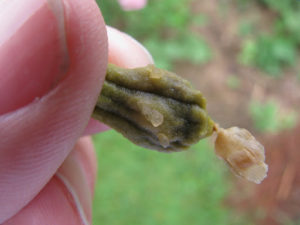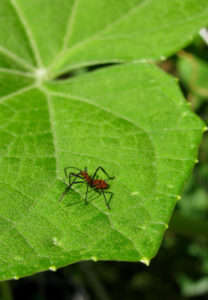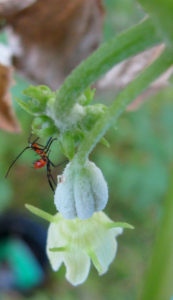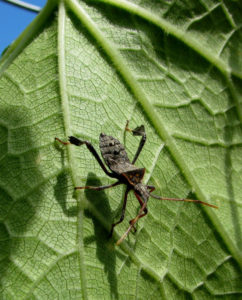Because of the warm winter, we have been getting an early crop of mirlitons that started in February. I noticed these gelatinous clear growths on the immature fruit and then spotted an immature and mature leaf footed bug (stink bug) that feed on the fruit.

Fruit fluids (cytoplasm) leaking from fruit and jelling. Note flower and fruit are dead
Dr. Dale Pollet of LSU identified these growths as the cytoplasm (fruit fluids) oozing from the fruit after the leaf footed bugs have penetrated the fruit skin to feed on it. In this case, attacking the very small immature fruit kills the fruit. I have seen the insect also try to feed on mature fruit which does not display any immediate damage but will manifest as brown bruising after the fruit is picked. They also spread plant diseases. The best method of control is to pick the insects off by hand, but they can be treated with organic fungicides. If you use an organic pesticide, be careful that it is not toxic to bees (it is pollination season) and that it is not phytotoxic (can damage leaves in high temperatures). Test it on a few leaves for one week first.

69
Immature Leaf footed Bug on Mirliton Leaf

Leaf footed bug feeding on flowers. They can block pollination tubes.

Mature Leaf Footed Bug (stink bug)
Lance Hill
Mirliton.org